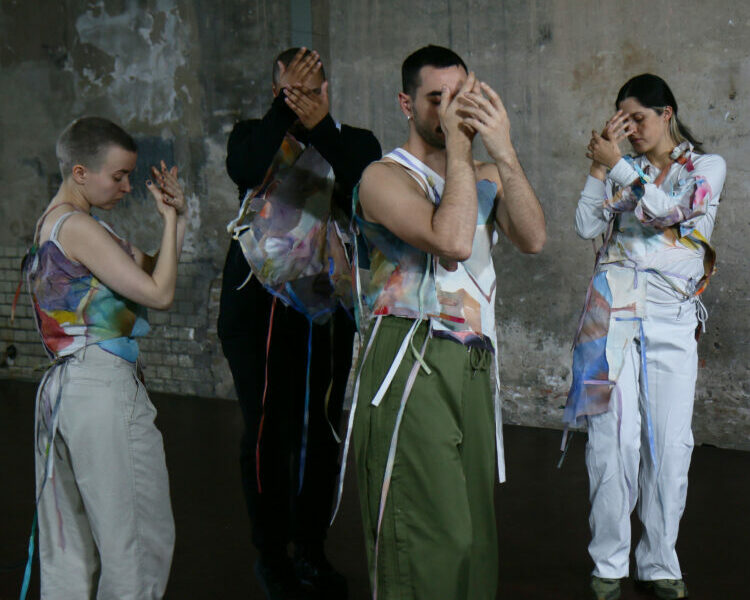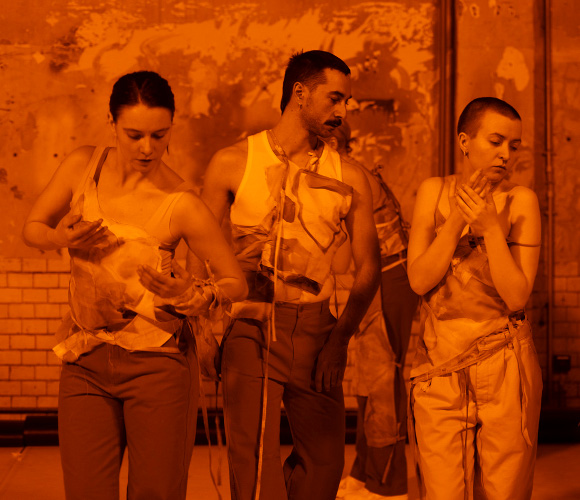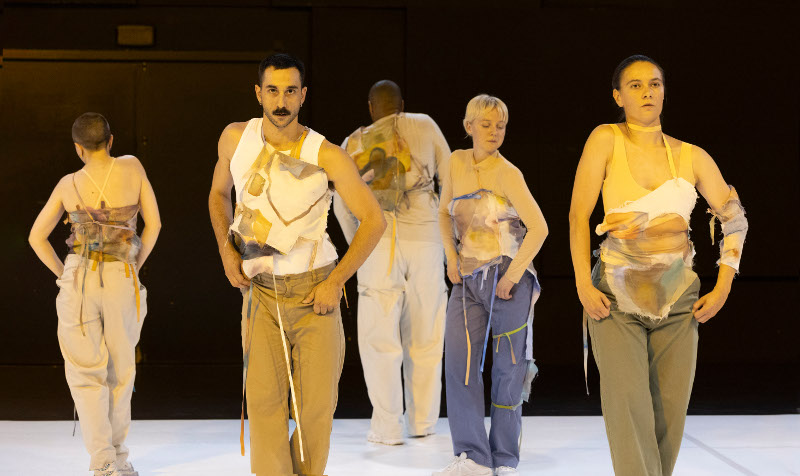
It is nothing less than a confounding political moment in which to write about “Shiraz,” a dauntingly brilliant dance performance seen last night at Montpellier Danse’s Hanger Theatre performed by a troupe directed by a young choreographer, Armin Hokmi. The Iranian-born, Berlin-based dance maker made very clear that his work was inspired by the suppressed Shiraz Arts Festival—an annual event that flourished from 1967-77 and presented the likes of Merce Cunningham Dance Company, it was terminated by Iran’s Islamic Revolution of 1979. The empty space occupying that gone-missing event inspired Hokmi’s quietly shattering spectacle for six dancers.
Hokmi presented “Shiraz” to a primarily French audience—among whose fellow citizens, circa twelve million of them, days ago installed a majority of politicians of the far-right National Rally party. At least one American (myself) was also present, in total shock that the highest court of the land, the Supreme Court, bestowed, in one fell swoop, something as antithetical to American political culture as “immunity” for an American president. Iranians have lived under a theocratic dictatorship for forty-five years. One felt a bracing sense of “We are all in this together, guys.”
But thanks to the power of dance, it was not all doom and gloom. Mr. Hokmi’s obliquely political statement gave hope that the pulse of the people endures.

“Shiraz” seduced me with its minimalism. A trance-dance performed in vertical orientation, it shuffled before our eyes with a relentless pacing of the feet. From a foundation of the dancer’s “fourth” position (one foot planted firmly, the other moving in and out at a 90-degree angle), the micro-steps traveled up the legs toward the trunk of the body. There, they found expression in a countervailing sway of the hips. The hip-swaying manifest differently male-to-female dancer: the women’s version a looser, organic pelvic rocking, the men’s slightly stiffer. No less than Martha Graham came to mind, for her stringent dance technique emanated from this core nexus of the human body. Graham was said to have been in search of the “House of the Pelvic Truth.”

Staged to a thumping techno-pop raga of Iranian tablas that percolated blurby-beeps, these infinitesimal steps propelled “Shiraz.” But, gosh, the discipline it demanded! The dancers would have had to madly track god-knows how many internal cues and beat-counting, adding as they went other gestures: a shoulder rolling over, then back; a plop into a shallow plie, head drooping downward; an undulating backbone; the cock of a hip like an upward hiccup; and “Shiraz”‘s predominant decorative motif, the quiet raising of the hand, palm facing inward, as though reading a text, shading the face, or using the hand to stand in for a burka.
The spacing of this always-traveling troupe was of great mystery. Never geometrically aligned, the dancers instead clustered in wedges and little packs, only rarely traversing each other, sometimes pairing up, but mostly co-existing in space with zero formal structure. “Shiraz”‘s sensational accruing of mesmerizing movements I found hypnotic. I so enjoyed it, despite the frisson of political panic it sent down my American spine.
Arts journalist Debra Levine is the founder/publisher/editor of artsmeme now in its sixteenth year of arts-blogging. Debra marks forty years as a dance critic in 2024.
